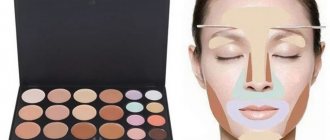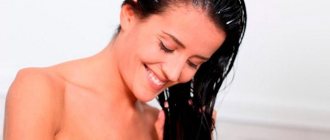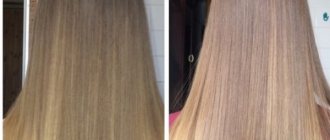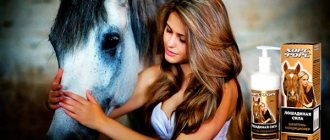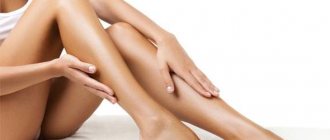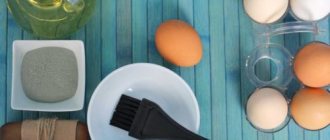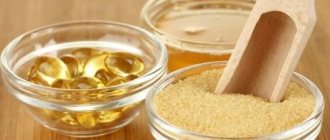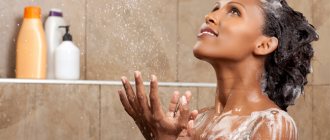How to choose the right shampoo for your hair? If he is elected, you can trust the advertising and buy the “most magical universal” option. Or, on the advice of a friend, take the products that helped her solve her hair problems.
But each person has individual characteristics. And if one remedy works for someone, it’s not a fact that it will help you too. That is, this approach is completely wrong.
The selection of shampoo should be carried out exclusively for the existing hair type. Otherwise, she will lose her health and beauty.
Before choosing one or another option, it would be considered correct to ask a more competent question of how to determine your hair type and choose a shampoo. It is the establishment of such a parameter that will help to properly care for them with a reliable and useful detergent. Below we describe in detail what types of hair there are, with recommendations for choosing types of shampoos for each individual case.
How to choose a shampoo based on your hair type
Choosing a shampoo for your hair may not be as easy as it seems.
The range of cosmetic products for washing hair today is simply amazing, and many girls get lost among the huge variety of different products. If you believe the manufacturers, most of them are able to solve several problems at once and, after one or two uses, significantly improve the condition of your curls and scalp. In reality, this is far from the case.
Shampoo is just a cleaning product, the purpose of which is solely to remove dirt, exfoliated skin cells and sebaceous secretions.
However, there are some features of this type of cosmetic product that you need to know when selecting it. First of all, to choose a good shampoo for your hair, you need to determine its type. This individual characteristic is predisposed at the genetic level, so it cannot be changed.
However, hair type should definitely be taken into account when selecting shampoo and any other cosmetic products.
- If you have a normal scalp, you can use almost any product. Unfortunately, only a very small number of people can be classified into this category.
- Most products for oily hair are designed to normalize the activity of the sebaceous glands. If you are really seriously concerned about the problem of excessive sebum production, this remedy alone is not enough for you. There are a huge number of other ways, including folk ones, with which you can try to normalize the situation. As a rule, in this case, homemade masks and balms are used based on chicken or quail eggs, honey and other bee products, as well as decoctions of medicinal plants.
- Dry hair and overly sensitive scalp tolerate detergents based on “soft” surfactants. Such products are almost impossible to find in ordinary supermarkets, but they can be purchased in pharmacies and professional hairdressing stores.
Many girls and women prefer to “kill two birds with one stone”, giving their preference to shampoos that also have conditioner functions.
In reality, if you purchase an inexpensive 2-in-1 product, you will not achieve any of the desired effects.
Very often, the substances included in their composition, which are designed to give your hair life-giving shine, smoothness and silkiness, are simply neutralized by the washing composition.
Such products also do not remove dirt very well. For professional hair care, several products are always used at once, each of which performs exclusively its own functions. In addition, you should always remember that good cosmetic products cannot be cheap.
Your shampoo. Or a short lesson in chemistry and shopping
In this post, I wanted to analyze in detail the difference between expensive and cheap shampoos, talk about the so-called “organic”, and understand what manufacturers charge money for. The post will be long and tedious, so whoever is not too lazy, get ready :) Nowadays, stores are full of different hair care products, and finding “your” series is not so easy. The price range ranges from 50-100 rubles, and up to 2000. What should be in a hair care cosmetic bag, according to class=”aligncenter” width=”335″ height=”500″[/img] 1. Well, this is first shampoo. 2. Mask 3. Conditioner or balm 4. “Leave-in” 5. Styling products (foams, sprays, etc.) At the same time, many formulations are “teeming” with harmful silicones, surfactants and parabens. Let's figure out what it is. I explain on five fingers as I myself understand, without clever words that are incomprehensible to mere mortals) Silicones
are a film that “envelops” the hair and prevents it from splitting further. Everything seems to be fine, and lalala. But if you stop using a shampoo (or mask, leave-in wash, etc.) with a certain silicone, the hair may lose the ability to protect itself from the environment, silicones can “layer” and prevent nutrients from penetrating into the hair, silicones can settle on the scalp. In addition, those who have oily hair without split ends do not need silicones in principle. Trideceth-12, Dimethicone Copolyo, Dimethicone copolyol/HWP, Hydroxypropyl, Polysiloxane, Lauryl methicone copolyol - these silicones, in combination with water, are washed off the hair, which does not lead to their accumulation. Amodimethicone, Behenoxy Dimethicone, Stearoxy Dimethicone - these silicones are not washed off from the hair with water. They are very difficult to wash out of the hair only in combination with tensides (shampoo). Cetearyl methicone, Cetyl Dimethicone, Cyclopentasiloxane, Dimethicone, Dimethiconol, Stearyl Dimethicone, Trimethylsilylamodimethicone - practically do not wash out. Surfactant is a surface active substance. There are more harmful ones and less harmful ones. These are foaming substances designed to wash away everything and everyone from the surface of the head. They were originally developed for washing equipment, and then cunning manufacturers began to add them to shampoos. Almost every detergent contains Sodium Lauryl Sulfate, one of the most harmful surfactants. These surfactants are used in cheap shampoos. They cause irritation of the skin and mucous membranes, contributing to the formation of such unpleasant diseases as dandruff and hair loss. There is an opinion that cheap surfactants can cause cancer. The most harmful surfactants Ammonium Lauryl Sulfate Ammonium Laureth Sulfate Sodium Lauryl Sulfate Sodium Laureth Sulfate Surfactant with a more gentle effect TEA Layril Sulfate/TEA Laureth Sulfate Cocamidopropyl Betaine Parabens are preservatives that inhibit the growth of microorganisms. Parabens are allergenic and can accumulate in some tissues, which can lead to the formation of malignant tumors. Parabens in cosmetics are easy to calculate: all the names of substances in this group end in “paraben” (Latin version - paraben).
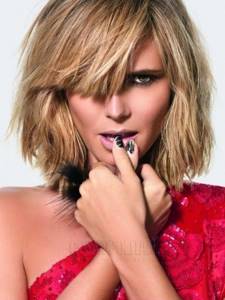
This list can be continued for a very long time; anything with Alcohol (aka alcohol), which is found in almost any mask, is also harmful. More details can be found on the Internet.
Let's move on to point 2. Types of shampoos. They are mainly divided into two categories, organic and inorganic. Organic ones include such as Organig Shop (price range 100-200 rubles) Natura Sibirica (200-500 rubles). Inorganic is basically any hair product. Sansilk, Gliss Kurr, Shauma, etc. Many luxury products also contain surfactants and silicones that make a pleasant foam and give a well-groomed appearance (Kerastase, Moroccanoil Oil). There is also a third type, which in principle belongs to the second group, but ascribes itself to the first one. These are: MoltoBene (from 1000), Lush (from 500 rubles) Secrets of Grandma Agafya (from 50 rubles) Professional brands Kerastase, Estel and Moroccanoil Oil contain silicones, but in small quantities. I also doubt the “righteousness” of the Organig Shop composition. Like MoltoBene with its deceitful Russian composition, there is too much organic material, but it foams very well. But, I prefer to believe Organic and think about buying Kerastase :)
This is the end of this post. My name is Alena and you call me) And my question: In your opinion, is it worth overpaying for shampoos?
After reading the comments, girls, I want to clarify some things: I did not list all brands of organic cosmetics, for example, because I did not pursue this goal, I took two, in my opinion, the most popular. In my opinion, hair can only be moisturized; there really is nothing special to treat. silicones (and depending on what kind) are only harmful to the hair, but it’s really difficult to live without silicones, I’m silent here) and, accordingly, everything is individual) There are a lot of critical comments, but I want to say in my defense that I tried to just briefly explain what the products consist of for hair, and what is most harmful there. I don’t force everyone to use products without silicones; in my opinion, safe types are necessary.
Increase
Composition - quality of shampoo
The fewer chemical elements in a detergent product, the better it is.
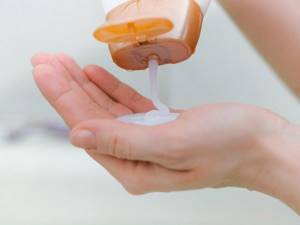
If you understand the composition of shampoo in detail, you can identify 5 main criteria according to which the purchase will justify your hopes and efforts:
- It is better that the composition contains not water, but decoctions of medicinal herbs and plant extracts.
- A good shampoo should not contain such an ingredient as sodium lauryl sulfate; it is this product that causes allergic reactions, dries out the strands and leads to itching and irritation of the skin.
- No chemical fragrances or bright dyes that do not benefit hair health.
- Extracts and extracts from various plants are welcome; these are a variety of essential oils, components of medicinal herbs and plant fruits - invaluable benefits for the scalp and hair.
- The obligatory absence of silicones, which cause the scalp to stop breathing, the blood circulation process is disrupted, the hair will quickly get dirty, which will lead to its untidiness (even despite the frequency of washing your hair).
For damaged hair, the detergent must contain useful additives - protein, keratin, fruit wax, D-panthenol, vegetable oils. These components not only carefully care for the strands, but also improve the hair structure and saturate the follicles with beneficial vitamins and microelements.
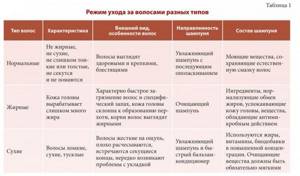
Washing your hair.
There are many ways to take care of your hair. But the key role belongs to shampoos. We wash our hair every day and don’t even think about the fact that this habitual procedure should be carried out adhering to certain rules. And the first of them is the choice of means for washing your hair, that is, shampoo. After all, only the right shampoo will help you achieve the result you are striving for. Conversely, if you choose the wrong shampoo, it will only make the situation worse. So, what should you pay attention to when buying shampoo?
Which shampoo is harmful to hair?
What shampoo can be called truly harmful? This is a product that contains a large number of parabens, sulfates and other components harmful to the body. They will be discussed below. Unfortunately, the most popular brands, which are market leaders, most often present quite harmful products in their assortment. Such shampoos lather well and produce a lot of foam, but at the same time they quickly make your scalp very dirty and you have to wash your hair again almost the next day.
The most harmful shampoos
- PANTENE PRO-V - products from this brand help well in the fight against split ends, however, due to the presence of sulfates, such shampoos have to be used almost daily.
- Loreal - almost all lines of this company contain harmful sulfates, so the products foam and cleanse the hair perfectly, but at the same time they are addictive and can cause irritation.
- Garnier is another sensational brand whose composition is far from healthy, but at the same time, these shampoo lines are great for many women.
- Shauma is a company whose slogan is incredible volume. At the same time, brand shampoos also contain sulfates and their analogues.
- Head and Shoulders is a well-known corporation whose products effectively combat dandruff. Shampoos actually relieve a person of this problem, but at the same time they can cause irritation of the scalp due to their rather aggressive chemical composition.
How to choose hair shampoo?
When choosing a shampoo, carefully read the text on the packaging. Use only the product that suits your hair type. In addition, after starting to use shampoo, analyze the condition of your hair. They should be washed well, there should be no sebum left on them, they should shine after drying and can be combed well. There should be no feeling of tightness or irritation on the scalp.
A good quality shampoo should compensate for the loss of nutrients, moisturize the hair, increase its elasticity, protect the cuticle and smooth the scales. A good shampoo contains ultraviolet filters. It does not weigh down the hair and makes it silky.
In order to determine whether the shampoo is suitable for you, one or two times of use is enough. And you can be completely sure of the right choice of detergent only after several weeks of regular use. If you manage to find a hair shampoo that completely suits you, it is unlikely that you should change it to some other one.

